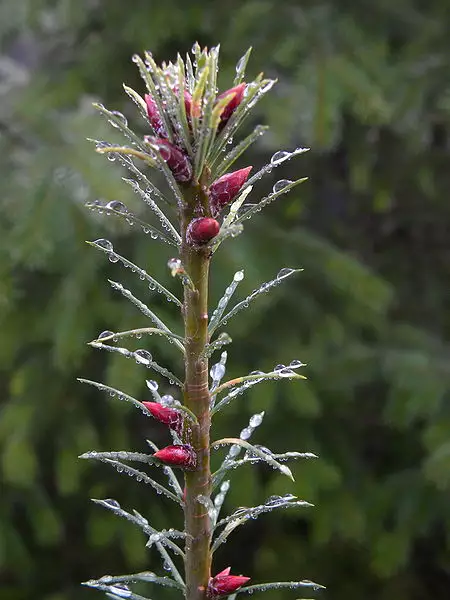Looking for a beautiful and versatile tree to enhance your landscape? Look no further than the Pseudotsuga menziesii var. glauca, also known as the Douglas Fir. Native to western North America, this evergreen conifer is a popular choice for both specimen planting and mass screenings.
One of the unique features of this tree is its wood, which is not only useful but grows quickly, making it a preferred choice for timber companies. After clear-cutting an area, timber companies often replant it with Douglas Fir due to its rapid growth. Additionally, the seeds of the Douglas Fir are a crucial food source for small mammals. In western Oregon, it is estimated that mice, voles, shrews, and chipmunks consume about 65 percent of the Douglas Fir seed crop.
The Rocky Mountain variety of the Douglas Fir is the Pseudotsuga menziesii var. glauca. This variety has adapted to higher elevations, up to 9500 feet, with a slower growth rate. It also has shorter cones, blue-green needles, and better winter hardiness. It is the commonly cultivated variety for areas outside of the Pacific Northwest and is particularly suitable for midwestern climates due to its better cold tolerance.
The Douglas Fir is often mistakenly referred to as a true fir, but it actually belongs to the genus Pseudotsuga. Its common name honors David Douglas, a Scottish botanist who first reported on the species. The specific epithet, menziesii, honors Archibald Menzies, a Scottish physician and rival naturalist to David Douglas. Other colloquial names for the species include Doug-fir and Douglas pine.
Coast Douglas Fir, one variety of the species, grows in coastal regions from central British Columbia to central California, with its range extending from the Cascade Mountains to the Pacific Coast Ranges and the Pacific Ocean. Inland, it is replaced by the Rocky Mountain or interior Douglas Fir variety, which intergrades with the coast Douglas Fir in certain regions. The Mexican Douglas Fir is also considered part of the P. menziesii species.
Douglas Fir is a large coniferous tree that can reach heights of 50 to 80 feet in cultivation, and over 300 feet in the wild. It features unique forked cone bracts that differentiate it from other conifers. The tree has a narrow pyramidal shape when young, but becomes more cylindrical with age as it loses lower branches. Flat, dark green needles with white banding beneath and fragrant when bruised give the Douglas Fir its distinctive appearance.
While the Douglas Fir is a great timber tree and forest tree, it may not be suitable for urban landscapes like cities or towns. However, it thrives in northern and northwestern climates with abundant air and soil moisture. It is not recommended for areas with hot and humid summers with periods of drought.
Overall, the Pseudotsuga menziesii var. glauca is a stunning tree with its unique characteristics and adaptability. Whether you want a specimen tree, a screen, or a beautiful addition to your landscape, the Douglas Fir is an excellent choice. Its versatility, usefulness, and cold tolerance make it a popular selection for many gardeners and homeowners. Don't miss the opportunity to add this magnificent tree to your outdoor space!















